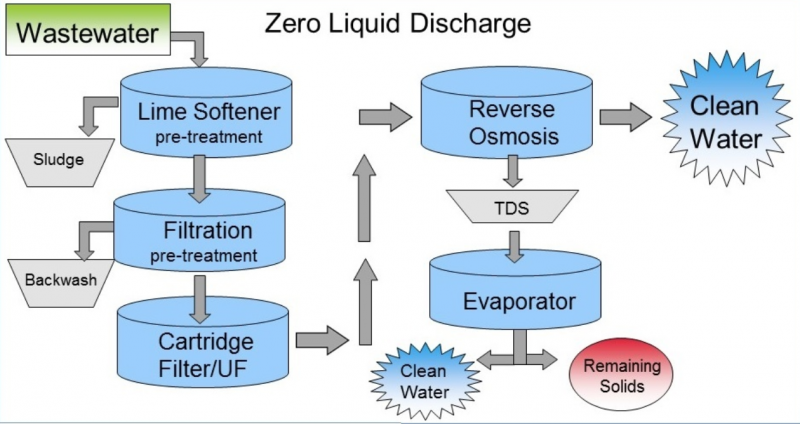Wastewater to Clean Water Chart
Published on by Liv Dong, Director at Nomia machinery co., Ltd / wastewater treatment evaporator system in Social
What do you think of the below chart?
Zero liquid discharge water treatment
Media
Taxonomy
- Effluent
- Industrial Wastewater Treatment
- Water Reuse & Recycling
- Industrial Water Treatment
- Waste Water Treatments
- Technology
- Industrial Water Reuse
- Zero Discharge
- Reuse
- Zero Liquid Discharge
9 Comments
-
Perhaps show how you are addressing the backwash water.
-
Orange County takes secondary wastewater and treats it by MF, RO, UV/Ox. and stabilization. The evaporator in your scheme will recover some water, but it is an expensive add on. You need to define Clean Water microbiologically and chemically. The WHO Guideline does that.
-
Nice explaination ever for a lay man.
-
http://www.who.int/water_sanitation_health/publications/potable-reuse-guidelines/en/ There are several potable water reuse configurations in use. WHO has Guidelines for IPR/DPR
-
Liv Dong, in areas of clean water scarcity the reclamation of all water from wastewater effluent may become more popular in the future, especially where climate change is affecting naturally occurring water resources in already highly populated and established communities. Barcelona in Catalunya, Spain is a prime example of how this is already being implemented and here they already have a water reclamation unit added as an extension to a traditional Activated Sludge Plant based wastewater treatment process. Currently the reclaimed water is used mainly used for irrigation purposes and also to help prevent saline intrusion into low lying land. It is more or less only the negative public perception in respect to turning it into potable water that has stopped that next obvious step from happening. In response to the cost issues raised by others I think that it would be useful to compare the cost of the steps required to transform already conventionally treated wastewater into potable water with the Desalination processes for seawater. In Barcelona they already have two Desalination Plants that supplement the potable water supply network at times of drought in the area, but these are also generally kept running at low output in order to maintain the system, these plants have a very high cost per litre output of potable water. If you want to see more about the Barecelona wastewater plant with water reclamation facility you can visit:
Unfortunately the text on the web pages is in the Catalan language but you maybe able to get the sense of it using Google Translate.
Regards David Harpur
-
Technologies treating wastewater and generating energy are what the world needs to face the global challenges
-
What for this clean water will be used .If for human consumption then Ph correction & E-Coli removal are suggested further.
-
You chart isn't new and it glosses over the impact of all the solid waste you are generating and the great costs of the steps. You have also not considered biological treatment as a step that would greatly reduce those solids.
-
Nothing new, and the first step is not lime softening, it is lime coagulation.
